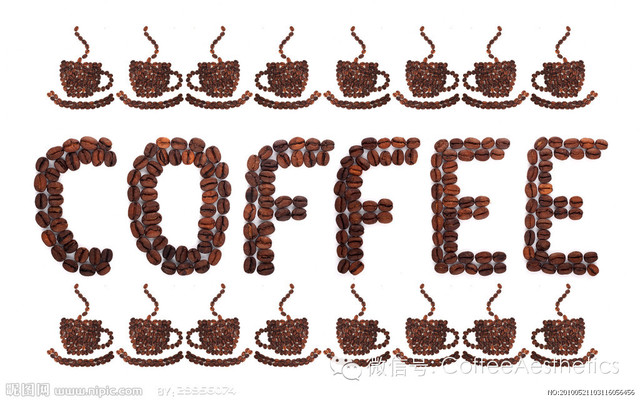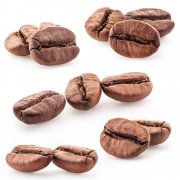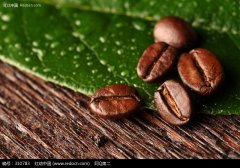The gouache in the coffee competition is better than the coffee required in the coffee competition.
Brewing ratio refers to the ratio of the amount of coffee powder to the amount of water extracted, which will directly affect the extraction rate of coffee powder and the concentration of coffee liquor. The European and American "Golden Cup Criterion" takes the amount of powder and water as the regulation and control tool of the "bubble coffee tube table". Its complexity and importance are more important than freshness, fineness and water temperature, time, and water flow.
If you have mastered the first three items and still can't make delicious coffee, the problem should be the wrong proportion of brewing.
The more powder, the higher the ratio of powder to water, and the higher the concentration of coffee liquid, the easier it is to suppress the extraction rate of coffee powder, resulting in insufficient extraction rate, waste of coffee, and bear the reputation of raging nature. On the other hand, under the fixed amount of powder, the more water, that is, the lower the ratio of powder to water, the lower the concentration, the easier it is to increase the extraction rate, resulting in excessive extraction.
Only in accordance with the "Golden Cup criteria" bubble cooking ratio, Baiwei balance, can enjoy the perfect extraction of delicacy.
How is the proportion of tabletop brewing coffee in line with international standards?
In Taiwan, hand-brewed coffee or siphon pots are used to using the weight of coffee beans, but there is no increase in black coffee liquor. for example, when you like espresso, you often use 20 grams of coffee beans to brew 200 gallons of black coffee, with a powder-to-water ratio of 1:10, which is simple and clear. it is also in line with the convenience of practical operation. However, it is difficult for the desktop comparison method to be in line with the "Golden Cup criteria" in Europe and the United States.
The proportion of coffee brewed at 1:10 in Taiwan is a far cry from that of the Norwegian standard 1VR 18.51, which must surprise most people that tabletop coffee is so strong.
In fact, the taste of coffee in Taiwan is not strong. The problem lies in the different ways of comparison. The "Golden Cup Criterion" in Europe and the United States is not the milliliters of black coffee that has just been brewed in terms of grams of coffee, but the milliliters of raw cold water extracted by grams of coffee. After many trial calculations and ExtractMojo detection of the concentration, it is found that the ratio of table coffee powder to black coffee milliliters at 1:10 is about the same as the concentration and extraction rate of the "Golden Cup Criterion" for raw cold water. In fact, there is not much difference, so the taste of coffee in Taiwan is used to higher alcohol thickness.
The concentration of 1:12 in Taiwan is about 14.5 of that of the Golden Cup Criterion, that is, the ratio of coffee used by coffee fans in Taiwan is lowered by 2.5 parameters, which can meet the concentration of the ratio of coffee beans to raw cold water in the Golden Cup Criterion in Europe and the United States.
The ratio of grams of coffee beans to milliliters of black coffee is significantly higher than that of grams of coffee beans to milliliters of raw cold water. no wonder international friends who are used to the "Golden Cup Criterion" are frightened when they hear the ratio of the desktop. it was only after explanation that they realized that it was the difference in contrast, causing a big misunderstanding.
Why does the ratio of grams of table coffee to milliliters of black coffee have to be reduced by 2.5 parameters to be equal to the ratio of brewing in the Golden Cup Criterion?
Hot water is lighter than cold water, and coffee powder absorbs water.
There is a scientific basis for the ratio of coffee powder to unboiled water in the "Golden Cup Standard" in Europe and the United States. The weight of 1 milliliter of water is equal to 1 gram, which is built at a room temperature of about 20 ℃ Celsius. You should know that the density and weight of water will decrease as the temperature increases, and the volume of water will become "fat" as the temperature rises. When the water is heated to 90 ℃-93 ℃, it happens to be the temperature of brewing coffee, and the weight will be 4% less than the same milliliter of unboiled water of 15 ℃-20 ℃.
Taiwan is used to using hot black coffee as the comparison standard. although the milliliter scale of the coffee pot indicates 200 milliliters of black coffee, it is actually 4% more than 200 milliliters of raw water at room temperature, and its weight is reduced by 3%. This is due to the expansion of water heating.
More importantly, coffee powder absorbs water like a sponge. Studies have shown that every gram of coffee powder absorbs 2ml of water, and 20g of coffee powder absorbs at least 40ml of hot water. In other words, brewing 200ml black coffee with 20 grams of coffee beans requires at least 240ml of raw cold water, of which at least 40ml remains on the coffee grounds of filter paper or filter, because the desktop comparison method takes hot black coffee as the target. At least count the amount of water left in the coffee grounds. However, if the Golden Cup Criterion is based on raw cold water, there will be no such error.
Therefore, cold water will expand when heated, and coffee powder will be absorbed wildly when exposed to water. These two factors interact so that the proportion of brewed coffee is coffee powder (table), or coffee powder is in line with raw cold water (golden cup criterion). The desktop ratio only needs to be reduced by 2.5 parameters, which is equivalent to the "golden cup criterion". The concentration of both is the same by ExtractMojo detection.

Important Notice :
前街咖啡 FrontStreet Coffee has moved to new addredd:
FrontStreet Coffee Address: 315,Donghua East Road,GuangZhou
Tel:020 38364473
- Prev

Liberia, produced in West Africa, currently accounts for about 5% of the world's total economically grown coffee production.
It accounts for only about 5% of the Liberica in the world's coffee. Translated into Chinese, it is called Liberica growing coffee beans, which is produced in Liberia in West Africa. At present, it accounts for about 5% of the total output of economically grown coffee in the world, with very little output, monotonous flavor, high bitterness, much larger shape than ordinary coffee beans, and the skin is very thick and difficult to remove the pulp.
- Next

Coffee machine cleaning how to clean coffee machine espresso
The performance of cleaning Italian espresso machine is to determine that the experiment must be in strict accordance with the experimental requirements, there is a group of coffee machine can not be cleaned at all. In the course of the experiment, we must try our best to control other conditions to ensure that the cleanliness of the coffee machine is the only variable that affects the taste of coffee, so the experiment must ensure strict requirements. Three groups of coffee machines, grinders and producers according to
Related
- Beginners will see the "Coffee pull flower" guide!
- What is the difference between ice blog purified milk and ordinary milk coffee?
- Why is the Philippines the largest producer of crops in Liberia?
- For coffee extraction, should the fine powder be retained?
- How does extracted espresso fill pressed powder? How much strength does it take to press the powder?
- How to make jasmine cold extract coffee? Is the jasmine + latte good?
- Will this little toy really make the coffee taste better? How does Lily Drip affect coffee extraction?
- Will the action of slapping the filter cup also affect coffee extraction?
- What's the difference between powder-to-water ratio and powder-to-liquid ratio?
- What is the Ethiopian local species? What does it have to do with Heirloom native species?

